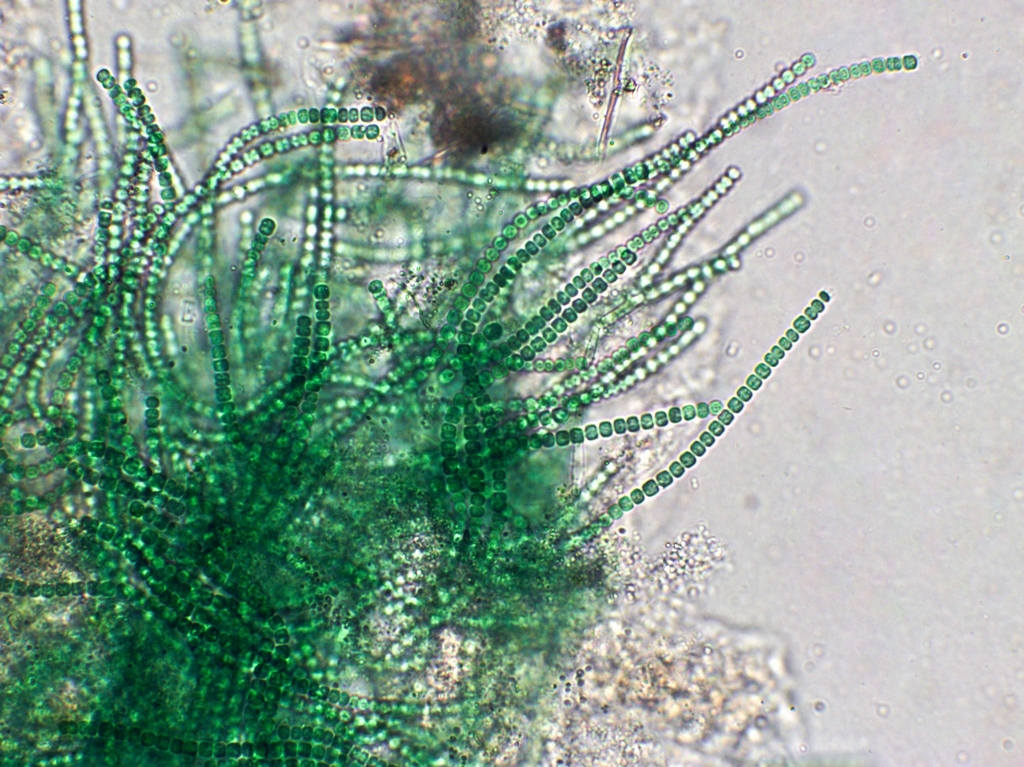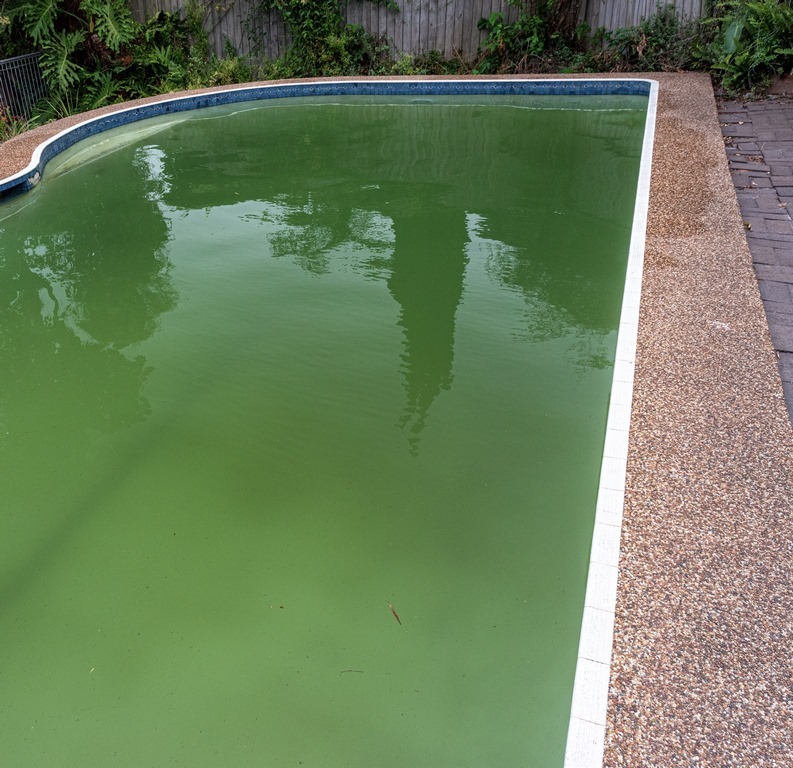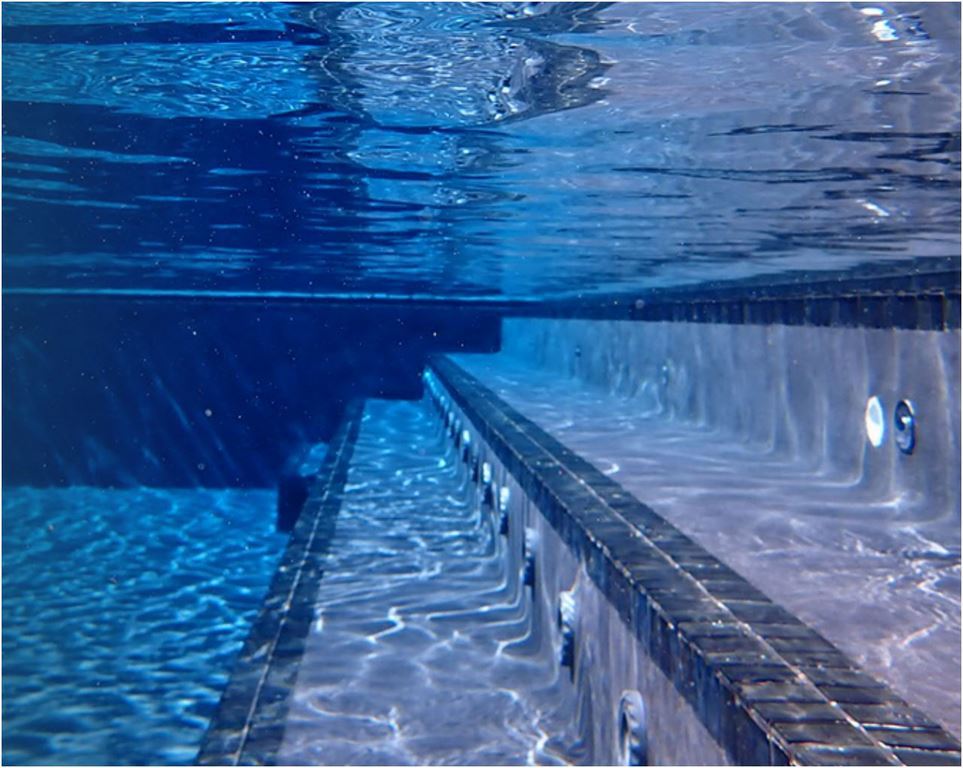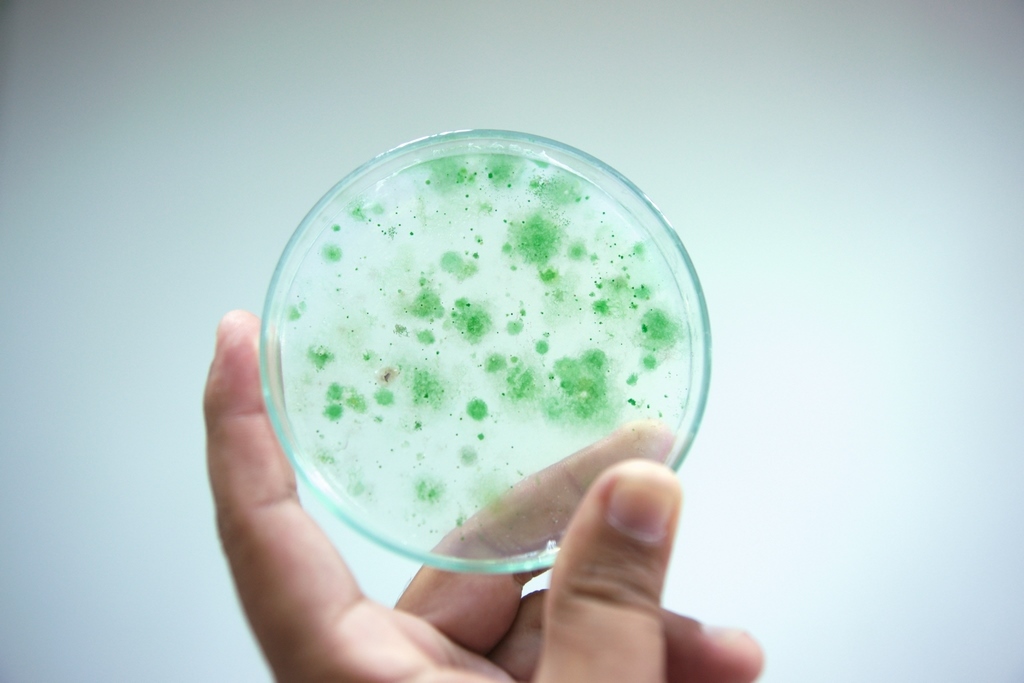Pool Algae Prevention


Algae are a class of organisms that are essential to life on earth. In a swimming pool, however, they become an affliction that compromises water quality and consumes chemicals. According to Haviland’s Kevin Vlietstra, although there’s an inevitable quality to algae, prevention is always the best treatment option.
By Kevin Vlietstra
I recently received a shareworthy email from a pool owner about a very familiar subject.
“I was watching The Universe (2007) on television last night, not paying a great deal of attention, when I heard the narrator say something about life beginning on Earth as bacteria that grew in pools of water. My ears perked up and I heard him mention cyanobacteria, a blue-green algae. I thought, OMG, that’s what’s growing in my swimming pool. My pool is full of creepy-crawly things. Life is forming in my swimming pool.”
This observation is correct, Bodies of water engender life forms ranging from blue algae to blue whales. In swimming pools, the waterborne residents tend toward the much smaller side of the scale.
Cyanobacteria are photosynthetic microscopic organisms that are technically bacteria, but they are often called “blue-green algae” or simply “pool algae. (They can also appear yellow, brown, purple, red, or white.) Regardless of the color, or how they are classified, cyanobacteria turn pools from clear and inviting to ugly and repelling.
Algae is introduced from a variety of sources, but most commonly, these organisms are brought into pools from rain and wind. As a result, almost every pool has some form of cyanobacteria growing in it. Unfortunately, high concentrations of nutrients, such as nitrogen and phosphate, can promote a population explosion and result in algal blooms, especially during warm weather.
Not only does this visually impact the water, but its pH can also climb, as algae consumes the carbon dioxide that helps keep it under control. Pool floors may also become slippery, which can be hazardous underfoot.
GROWTH PREVENTION
The good news is that expansive algae growth can easily be prevented in any pool under most normal operating conditions. First, adding a sanitizer will help neutralize enough micro-organisms to help keep the algae count down, so there is no visual impact. Frequent vacuuming or sweeping is also important to prevent accumulation of visible algae on surfaces.
In addition to adding an oxidizer (typically chlorine) daily, routinely adding another oxidizer at a higher rate will also help to reduce the algae count. While a non-chlorinating oxidizing shock will not remove algae, all the other contaminants can be squelched, so the primary oxidizer can keep water safe, and minimize algal growth.

Chlorine is a versatile chemical that prevents and solves a host of water-quality problems. While the proper use of chlorine is an enormous subject unto itself, in the context of algae prevention it is a frontline measure. Not only does it work to kill algae, it also oxidizes the nutrients that feed it.
However, with too much of a good thing, there are eventually repercussions. For example, because chlorine is a bleaching compound, there will naturally be some colour degradation of surfaces if too much is added, or if it is repeatedly added at high concentrations. Other issues may compound with repeated high-level usage, such as elevated cyanuric acid (CYA) levels when using stabilized chlorine compounds. Chlorine products without stabilizers also have their hiccups, such as excessive total dissolved solids (TDS) when using sodium hypochlorite, or exorbitant calcium when using calcium hypochlorite.
And, of course, chlorine results in the formation of disinfection byproducts, such as chloramines and many others, which result in the familiar “chlorine smell” and cause a number of other irritating problems.
Yes, chlorine plays an important role, but it does need to be managed correctly, and there are situations where you need added measures.
COMMONLY USED ALGAECIDES
Algaecides should always be considered as the last addition to pool water to keep algae at bay. By themselves, they are unlikely to keep algae from visually creating ugly pool water, but when used as a preventative along with an oxidizer, they will help to significantly reduce the amount of oxidizer needed in order to keep water clear.
Knowing all the algaecide options, for both routine maintenance and mass destruction of algae, is essential to be able to choose the right one when a particular situation emerges.
Quats
Quaternary ammonia compounds (quats), typically alkyl dimethyl benzyl ammonium chloride, are organic based “cleaning” type algaecides. These algaecides have a surfactant quality to them that may cause them to foam, especially in the presence of aerated water. Regardless of the visual results of their addition, these algaecides are effective as a killer on contact, as they disrupt the cell membranes. However, quat-based algaecides do not have much staying power in water compared to other liquid algaecide products, especially in the presence of higher levels of chlorine.
Polyquats
The other non-metal algaecides used in pool water are polyquats, typically polyethylene dichloride. Unlike quats, these algaecides do not foam. They are effective at clarifying pool water and work on a broad spectrum of algae. Since these algae preventers work by essentially encapsulating algae (part of the reason why they are good clarifiers), the potential working effects of this chemistry could be impeded by any common debris present in the pool. Polyquats have good staying power in the water for a liquid product, usually a week or two, and are fairly chlorine tolerant.
METAL-BASSED
Copper
The most common metal-based algaecide utilizes copper. Copper products are both algaecides and algaestats and are effective on all types of algae. Because they can also be considered fungicides and bactericides, they can be effective against bacteria such as “pink slime.” Effectively chelated copper algaecides can last a longer time in water without causing issues, especially if the ideal water balance levels are maintained.
Since copper poisons pool algae, its efficacy is slow, but very high. It also has the potential to discolour bathers’ hair and plaster surfaces with a blue-green colour if it precipitates out of solution. In present-day applications, copper products are one of the lower cost algaecides. When adding metals to pool water, the effluent waste should never be discharged into ponds, streams, or similar water.
Silver
Although not much is needed in order to be effective, silver algaecides are among the higher priced algae treatments. This metallic algaecide and bactericide has a similar staying power and killing mechanism to copper algaecides. Silver algaecides products are effective against black algae and “pink slime.”
However, similar to copper algaecides, they do not fare well with salt chlorine generators.
ALAGAE-DESTROYING ADJUNCTS
Sodium bromide (NaBr)
While it is not considered one by itself, sodium bromide is used like an algaecide. It introduces bromide ions to the water, so they may be 4 oxidized or changed into hypobromous acid—the killing agent of bromine. Hypobromous acid is a highly effective destroyer of algae. However, if used by itself, it cannot be stabilized and is lost quickly in the water.
Sodium bromide also creates an oxidizer demand in the water which can take days or weeks to resolve. Minimal dosing is recommended, and it is best used with minimal physical presence of algae, typically spot blue-green algae, and mustard yellow algae. As a side note, bromine (BCDMH or DCDMH) itself should be considered for daily use if algae is a common occurrence in the pool.
Ammonium sulfate ([NH4]2SO4)
Ammonium sulfate is another chemical compound thought to be an algaecide, even though it is not. Ammonium sulfate is an inorganic salt used as a fertilizer in other industries. In pools, it is used as an accelerant for algae. After the chemical is applied to water, the algae divide rapidly, and become more vulnerable to treatments.
Because a pool professional would add chlorine at the same time, they would rid the pool of the algae instead of creating more. Using this chemistry often requires pH adjustments before and after treatment. Several kilograms (pounds) of oxidizers are also needed to treat even smaller bodies of water.
PROPER TREATMENT

Determining which algaecides to use comes down to what type of algae is present. Secondary factors to consider are personal preference, affordability, and availability. This helps professionals select the appropriate treatment to help clarify the pool water. As mentioned, certain treatments are better suited for particular species of algae.
It is also important to establish how much algae is in the pool. While there are some who may be reading this article poolside and are able to assess the situation first-hand, there will also be several others flying blind behind a counter, solely leaning on the words of a likely embarrassed customer. Many consumers may feel they did something to cause the excess algae growth, so they could possibly diminish the severity of the issue.
For the customer who is seeking for an immediate solution, it is essential to ask more questions than just, “How does the water look?” Professionals should inquire further about the amount of algae and, more specifically, the colour of the pool water. Typically, the darker the colour, the more extensive the algae outbreak, especially with green algae. If the pool has algae and the water is clear, finding out what percentage of the pool has the algae, what colour it is, and its locations, will be important in determining treatments.
In many cases, when clearing large amounts of algae, there are two actions that need to occur prior to adding an algaecide. The first is to address the pH, if applicable. Usually, when the water has been overrun with algae, the pH needs to be corrected. This is because it will often climb as algae accumulates, and most algaecides—other than ammonium sulfate—will function better in a more neutral environment.
The pH will also need to be adjusted for the next step, which is to “shock” the water with a chlorinating product. It is essential to get a lot of hypochlorous acid (chlorine’s killing agent) out of the chlorine that is added. One can even make the case to have the pH temporarily go slightly below 7.2, towards 7.0, to produce more hypochlorous acid.
Ultimately, the best practice is to follow the label directions for any product.
Another precursor, prior to applying treatments, is the mechanical removal of any presence of growth. If there is less to treat in the water, then whatever is used to help remedy the pool will go further. Those working in the field will have to find out the correct order and balance to maximize their time. Whether they are doing the heavy lifting, or giving advice, the best practice is to remove the matter out of the pool altogether.
Ideally, using the pool’s vacuum system, or a standalone vacuuming system with a fine mesh bag, will help clear up the water along with any buildup. Since time is essential to everyone, at the very least, a thorough brushing of all surfaces along low circulated places (under the ladder, corners, etc.) is encouraged to have all the growth floating freely around the water. In theory, all this matter should take on the treatment products in the water, for a more successful kill rate.
THE FINISHING TOUCH
Any effort to successfully turn a pool from a haven of growth to an inviting oasis will involve circulation and filtration. Circulation will ensure all the treatment products meet with the algae to help ensure its demise. Once the algae is killed, the filter will help clear it out of the water. However, it can easily get overwhelmed with dead particulate during the pool’s recovery, so rinsing or backwashing may be necessary to speed the clearing process along.
Some of this particulate can be very fine, so it may be helpful to use a supplement such as a clarifier or an enzyme. These are not a necessity for success, but they could help, especially for sand filters, as the media is not as capable of catching as fine a particle size, compared to cartridge or diatomaceous earth filters.
References:
“Cyanobacteria (Blue-Green Algae),” published online by the Maine Department of Environmental Protection.
“Guidelines for Canadian Recreational Water Quality,” published online by Government of Canada.
“Visual Identification of Cyanobacteria and Green Algae and Duckweed,” published online by the Ohio Environmental Protection Agency.
“Other Algaecide Types,” National Swimming Pool Foundation, Pool & Spa Operators Handbook, 2017, pg. 85.
Kevin Vlietstra is the technical director and regulatory specialist with Haviland Pool and Spa Products. He has been working in the recreational water industry for more than 25 years. He can be reached via e-mail at kevinv@havilandusa.com.
Opening photo by Rattigua Thongdumhyu | Shutterstock, petri-dish image by Chaknit-Studio | Shutterstock, clear pool photo by Steve Kenny, SRK Pools, Wainscott, NY.










